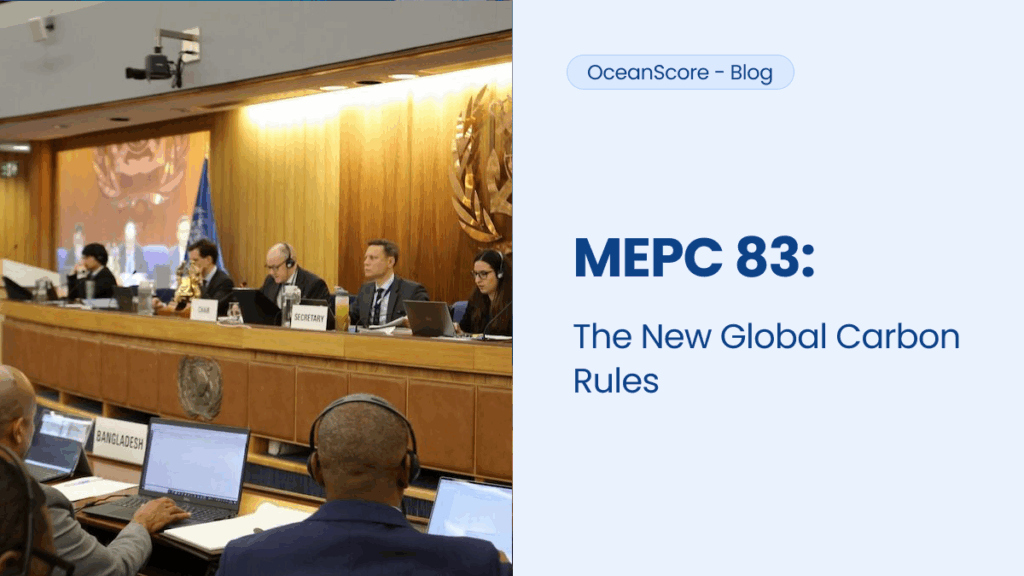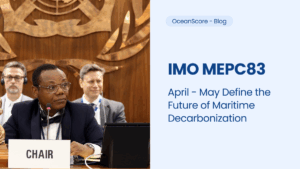MEPC 83 – long awaited – has now approved the “mid-term GHG reduction measures as amendments to MARPOL Annex VI”.
What has been agreed is complex. Very complex.
We are now seeing the emergence of a global counterpart to FuelEU Maritime, with certain elements from the EU ETS framework blended in. The scope remains largely the same: vessels over 5,000 GT are affected, and well-to-wake (WtW) emissions are considered, just as in FuelEU. The structure relies on a threshold-based compliance mechanism, with added features such as pooling and banking options.
However, the real complexity lies in the mathematics behind compliance. The regulation introduces two thresholds. The first is a “direct compliance target”, set at 17% below the current greenhouse gas intensity (GFI) baseline. Exceeding this level – as all conventional fuels and some LNG are expected to do, triggers the obligation to purchase Remedial Unit 1 (RU 1) at a fixed price of USD 100 per tonne of CO₂e. This is somewhat comparable to the EU ETS, though this system is threshold-based rather than market-based.
The second threshold is a less stringent “base target”, set just 4% below the current baseline. If this target is not met – and again, conventional fuels will fall short – the vessel will be required to purchase Remedial Unit 2 (RU 2), in addition to RU 1, at a much higher rate of USD 380 per tonne of CO₂e.
Instead of purchasing RU 2, operators will have the option to pool their vessels with others that emit less than the direct compliance target — a mechanism similar in spirit to that used in FuelEU.
While RU prices are fixed until 2030, the compliance thresholds will be reviewed and tightened annually, adding yet another layer of complexity. For operators already grappling with FuelEU and EU ETS, this additional burden is significant — even for those of us who focus exclusively on regulatory compliance.
There is, however, a degree of reassurance when it comes to cost. The expected compliance expenses under the MEPC 83 measures are lower than those under FuelEU Maritime, where penalties typically average around €640 per tonne of CO₂e. Moreover, the first year of mandatory emissions reporting will be 2028, not 2027 — a more realistic timeline given the complexity of implementation.
Nonetheless, many important questions remain unanswered.
The responsible party appears to be the Document of Compliance (DOC) holder, though the current wording leaves room for interpretation. In addition, numerous technical details, including fuel specifications, still need to be developed. The mechanism itself must be built from the ground up, including the establishment of a new central database.
It is also important to note that nothing is final yet. The proposal could still fail. There is visible dissent within the IMO, and notably, the United States did not attend the session, choosing instead to actively lobby member states against the agreement. Although a formal vote passed with 79% support, the U.S. delegation had walked out in protest beforehand. A final decision will be made at MEPC 84 in October, where a two-thirds majority of MARPOL Annex VI parties will be required for adoption. At this stage, failure remains a realistic possibility.
How OceanScore can help:
Whatever the outcome, we at OceanScore are prepared. Our team has been built specifically to tackle regulatory complexity, and our solutions — such as the Compliance Manager — are designed to evolve with changing rules. We are already preparing to integrate MEPC 83 into our platform.
The engine is well tuned and running at high RPMs — for you. Whatever happens next, OceanScore stands ready to support you.























































